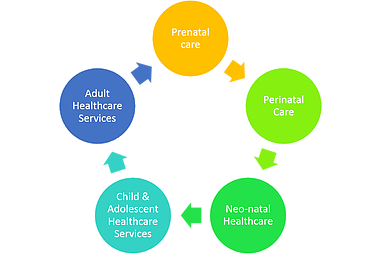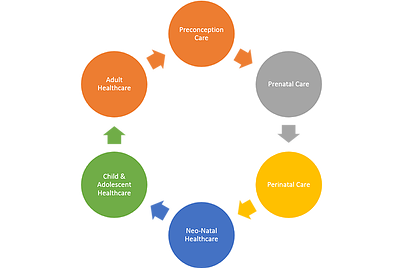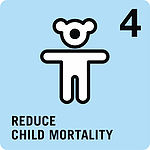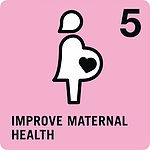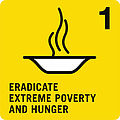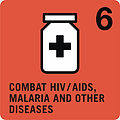Educational InformationPreparing for Life is a Non-Governmenal Organization and Dutch initiative. It is driven by patient/parent organizations (VSOP/EGAN/IGA, service clubs and scientific/academic groups and institutions. The initiative was based on a report of the Health Council of The Netherlands, “Preconception Care: a good beginning” (2007) and on a report of an expert steering committee instituted by the Dutch Government, “Safe care around Pregnancy and Birth” (2010). MissionPfL is committed to reducing the global burden of maternal and child mortality and morbidity (4th and 5th millennium development goal of the United Nations) by preconception care as part of the continuum of maternal, newborn and child health aiming at expectation of healthy longevity. Therefore, the mission of the initiative is to introduce preconception care as additional link in the continuum of care model with the preliminary goal to have Preparing for Life programs integrated in national primary healthcare systems in 192 countries by the end of 2015. ObjectivesThe ultimate objective is to establish a global network on preconception care to tackle the burden of maternal and child mortality and morbidity, thereby contributing to the achievement of the 4th and 5th Millennium Development Goal, by:
|
The "Current" Continuum of Care
Continuum of Care Model - With missing link "Preconception Care"
|
The main goals we contribute to: |
Support Goals through which we can achieve our mission:
|
As you may know, the Millennium Development Goals were the eight international development goals for the year 2015 that had been established following the Millennium Summit of the United Nations in 2000. The United Nations has since the yer 2015 been able to release facts about the MDG's (see below) and has also initiated 17 new goals, the Sustainable Development Goals (SDG's). Preparing for Life strives to keep up to date on these important events, and therefor we will provide a short summary of the results of the MDG's and introduce some of the SDG's that are most compatible with our organization.
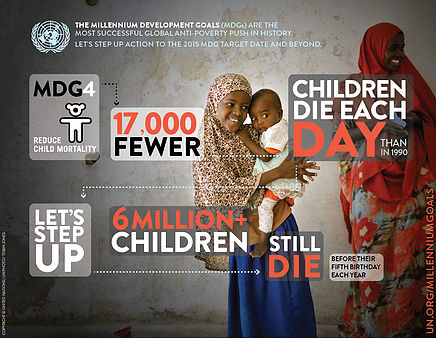 |
Results for Millennium Development Goal #4: Reduce Child Mortality:
|
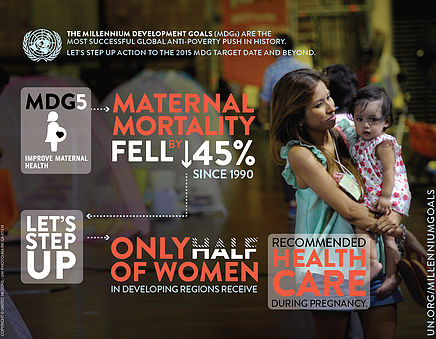 |
Results for Millennium Development Goal #5: Improve Maternal Health:
|
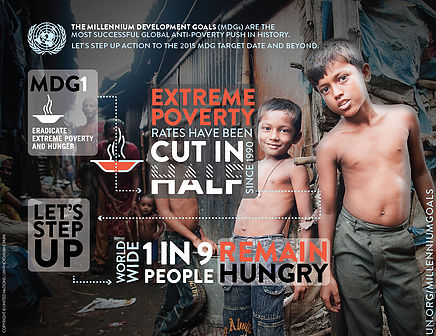 |
Results for Millennium Development Goal #1: Eradicate Extreme poverty and Hunger:
|
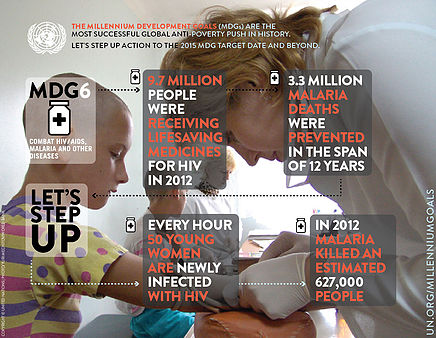 |
Results for Millennium Development Goal #6: Combat HIV/AIDS, malaria and other Diseases
|
All results stated above are provided by the United Nations. To read the full report on the Milennium Development goals, follow this link.
Sustainable Development Goals
On September 25th 2015, countries adopted a set of goals to end poverty, protect the planet, and ensure prosperity for all as part of a new sustainable development agenda. Each goal has specific targets to be achieved over the next 15 years.
Strategic Aims
The following aims are central to the PfL initiative:
- To promote international awareness and the development of programmes for preconception care.
- To shift the paradigm for effective maternal and child health programmes from a focus on pre- and postnatal care to a paradigm that acknowledges that the avoidance of mortality and morbidity and the promotion of health for pregnant women and their children starts in the preconception period. It requires that risk factors which influence the health of the mother and baby-to-be, in pregnancy, infancy and childhood are addressed before the baby is conceived.
- Preconception care must be integrated into the traditional prenatal, perinatal, neonatal and child health services continuum of care. This should be achieved by implementing preconception care into existing programmes and services, particularly in primary health care.
Policy/strategy
To achieve the agreed goals, PfL strives to work catalytic; identifying the responsible persons, institutions and organizations and to motivate, support and facilitate them to deliver the needed actions and/or services. Five pillars (nutrition, medicine, lifestyle, genetics, environment) are defined as important aspects of the global introduction and implementation of preconception care. PfL works in close collaboration with the WHO and other international bodies.

